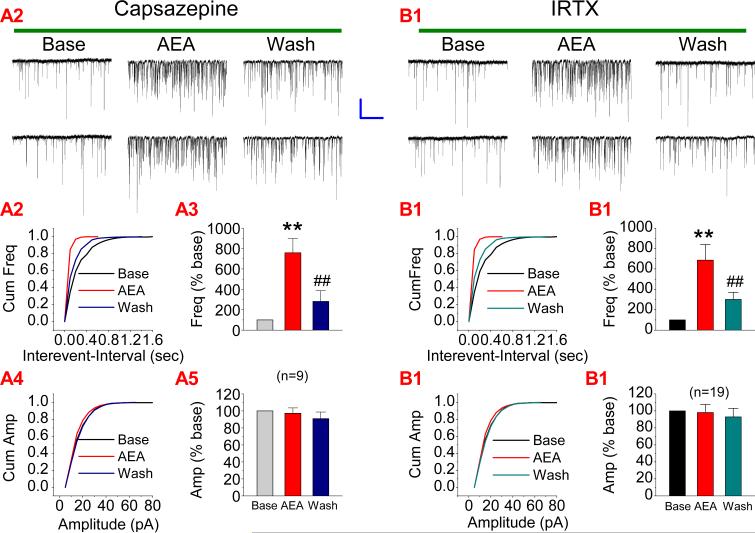Figure 3.
AEA-induced increase in excitatory synaptic transmission is not mediated via a vanilloid receptor. (A1). Representative sweeps of mEPSCs in neurons treated with capsazepine (vanilloid receptor antagonist, 10 μM) in the absence or presence of AEA (5 μM) and washout. (A2). Cumulative probability of mEPSC frequency. (A3). Mean percentage changes in the frequency of mEPSCs (n=9). (A4). Cumulative probability of mEPSC amplitude, and (A5). Mean percentage changes in the amplitude of mEPSCs. (B1). Representative sweeps of mEPSCs in neurons treated with iodoresiniferatoxin (IRTX, selective TRPV1 receptor antagonist, 3 nM) in the absence or presence of AEA (5 μM) and washout. (B2). Cumulative probability of mEPSC frequency. (B3). Mean percentage changes in the frequency of mEPSCs (n=19). (B4). Cumulative probability of mEPSC amplitude, and (B5). Mean percentage changes in the amplitude of mEPSCs. **P<0.01 compared with baseline; ##P<0.01 compared with AEA. Scale bar: 20pA/2sec

